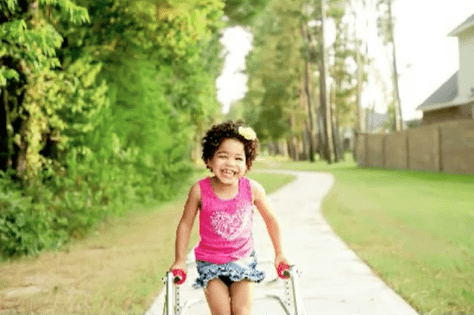How Communities and Colleges are Helping Children with CP

The most common struggle for children with cerebral palsy is coordination and mobility. Many rely on assistive mobility devices such as wheelchairs, walkers and special bikes to move around as independently as possible.
Colleges, foundations and independent organizations across the country are finding new ways to bring these devices into the lives of the children who need them most.
Custom Bikes for Children with Cerebral Palsy
Recently, an organization known as the Friendship Circle held their fourth annual Great Bike Giveaway. This is a national contest to provide specialized, adaptive bikes to children with special needs. Founded in 1994, The Friendship Circle is an organization that strives to make every person with special needs feel included and a part of a social circle.
The Great Bike Giveaway is held in honor of Michaela Noam Kaplan, who passed away unexpectedly in 2009. Despite her cerebral palsy diagnosis, Michaela lived a happy and beautiful life. Michaela found freedom and happiness while riding her own adaptive bike. It allowed her to explore the sidewalks of her neighborhood, the zoo, and even the baseball diamond.
Michaela’s parents have partnered with the Friendship Circle to provide free adaptive bikes to other children with all kinds of special needs. Past winners have included children with autism, Down syndrome, spina bifida and other developmental and physical disabilities.
Hunter Ripley, a 7-year-old with cerebral palsy, was this year’s winner. He now has the chance to experience that same freedom and enjoyment that Michaela had, but on a bike that is specifically tailored to his needs.
Hunter’s community of South Glen Falls, New York, nominated and voted for him this year for the Great Bike Giveaway. He won with over 12,000 votes. He is now able to ride his new adaptive bike alongside his two younger brothers, an activity that his brothers are certainly looking forward to sharing with Hunter.
“We’re just so thankful that everybody has rallied around our family and Hunter,” said Bekah Ripley, Hunter’s mother, after finding out her son won the contest.
Current Research and Improving Mobility for the Future
The Cerebral Palsy International Research Foundation (CPIRF) is constantly pushing their research efforts forward in order to improve the lives of individuals with cerebral palsy. They provide research grants and scholarships to different research centers and researchers across the globe.
According to their website, the CPIRF focuses their efforts on:
- Preventing cerebral palsy
- Improving motor skills and cognitive development in children with CP using new technologies
- Preventing othe complications and improving the quality of life in all individuals with CP
Researchers at the CPIRF are currently working on quite a few projects to better the lives of those with cerebral palsy. Research grants are given to professionals in the field who are attempting to find new forms of therapy and medical care for those with CP.
In 2014, one research grant was awarded to Dr. Ming Wu at the Rehabilitation Institute of Chicago. His project involves building and refining a robotic system that emulates hippotherapy (horseback riding). Hippotherapy has been shown to improve balance in children with cerebral palsy because of the way the horses move as the child rides them.
This robotic system would grant wider access to simulated hippotherapy since horses are not available for therapy in all areas. Through these types of robotic systems, researchers hope that children with CP can improve balance and walking functions.
Cerebral Palsy Advances in the Classroom
Research is not only conducted through prominent foundations, but also in the works of college students.
Four college seniors in the mechanical engineering department at the University of Michigan recently changed the life of a little boy with CP. Braden Gandee is an 8-year-old from Temperance, Michigan. Braden has cerebral palsy and like others with CP he has problems with his walker on different environmental grounds. For an assignment in their Senior Design and Manufacturing class, these students took it upon themselves to improve a walker that Braden uses on a daily basis.
The walker that Braden used at the time was considered an “all-terrain” model, but he was still limited in his mobility in areas with mulch, gravel, sand, snow and other areas with uneven ground. According to an article published by the Washington Times, Braden struggled to walk around on the playground and across parking lots with cracked concrete.
These students used 3-D full body scanning equipment to take precise measurements for Braden and find points where he needed stronger support. The team created adjustable handlebars on Braden’s new walker which would help to improve his posture. They also included larger wheels to compensate for different terrains that Braden may come across.
“We are happy we were able to end our undergraduate careers with a project that may truly make a difference in someone’s life,” said Ariana Bruno, one of the seniors involved in building Braden’s new and improved walker.
